Scarpa Drago Review (2024): Ideal Sport/Bouldering Pick?

A pioneer in the category of super-soft, sensitive shoes designed to crush steep terrain–and one of the first climbing shoe models to break the $200 price barrier–the Scarpa Drago is an elite piece of gear for serious climbers in the gym and outdoors.
Bottom Line
In this case, it’s obvious at first glance that the Drago possesses an extremely aggressive shape. Often this type of design leads to constricted flesh and painful sessions, but this shoe refuses to follow that trend.
Instead, the split sole and thin, flexible midsole combine to produce the sensation that you’re wearing a form-fitting sock. Indeed, everything in the shoe’s design and construction contributes to the softness and sensitivity of the Drago’s calling cards.
Overall, I recommend the the Scarpa Drago to strong climbers. They will love the shoe’s hyper-sensitive feel and grip on the smallest features. For some people, no price is too high for a climbing shoe that makes marginal footholds feel good, and nonexistent ones seem possible.
- Materials and construction exhibit the highest level of Scarpa’s technological innovation
- Comfortable fit considering its aggressive nature and design
- Fairly versatile capabilities for such an extremely specialized shoe
- Soft construction offers unparalleled sensitivity for small toeholds and smears
- Somewhat delicate due to thin rubber outsole and minimalist construction
- Lack of stiffness means edging ability is reliant on climbers’ foot strength
- Still expensive for a shoe that may wear quickly
Scarpa Drago Detailed Review

The Scarpa Drago is an aggressive shoe for intermediate to advanced climbers. Using the same last as the Scarpa Chimera, it’s designed and marketed for rock climbers specializing in vertical to overhanging sport routes and boulder problems.
The Drago combined all of Scarpa’s cutting-edge shoe technology when first introduced. The PCB-Tension rand system helps retain the shoe’s downward shape and focus power on the big toe area without requiring a stiff midsole.
Scarpa’s SRT (Surround Rubber Tension) is essentially a layer of specially formulated rubber that envelops the forefoot top part of the shoe. This propriety compound of soft rubber, called M50, works with the rand to maintain the shoe’s shape and prevent deformation. Its soft and sticky character also leads to the Drago’s absurd toe hooking abilities.
To top it off, Scarpa employed Vibram’s softest and grippiest rubber formulation, XS Grip 2, in the Drago’s reasonably thin, 3.5 mm outer sole. A synthetic microsuede upper resists stretch, and a single velcro strap cinches down the instep and arch.
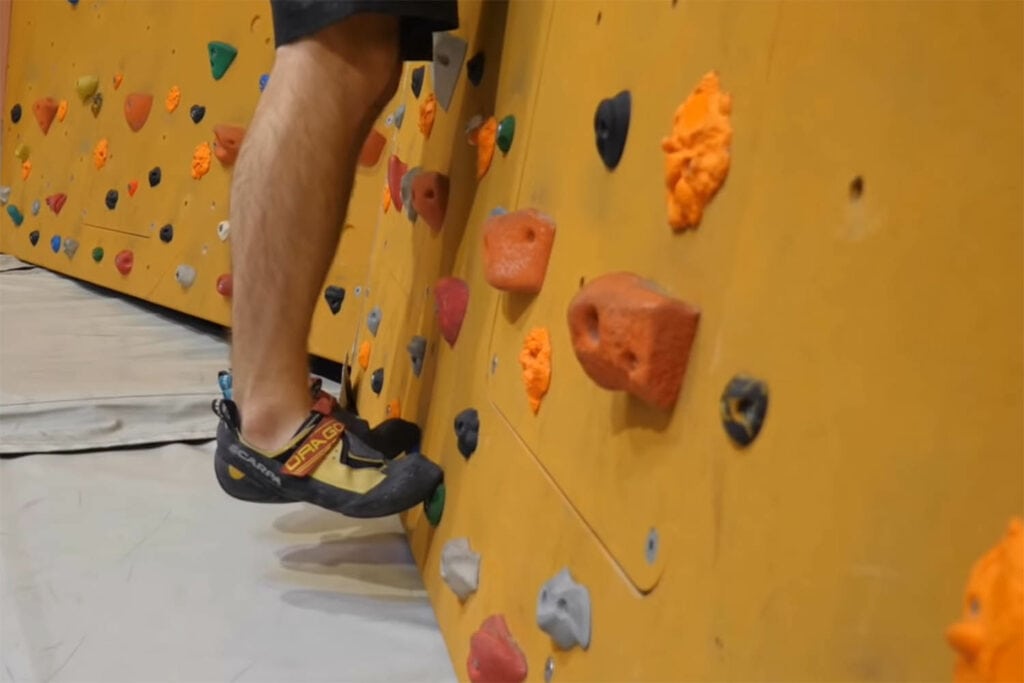
Extremely lightweight, sharply downturned, and asymmetrically curved from heel to toe, the Drago proved to be much more comfortable than appearance suggests. Most wearers attribute this comfort to its soft and slipper-like fit. This is one of the softest shoes you can buy.
How does all this technology stack up in performance terms? Outstanding. Reviewers overwhelmingly called this one of their favorite shoes for gymnastic, overhanging moves on tenuous footholds. Whether slippery plastic holds in a bouldering cave or polished nubbins of sandstone on your latest project, the Drago dispatches technical footwork as few other models can.
There are several other ultra-soft, high-performance rock climbing shoes on the market today, but the Drago was one of the first and still a top choice.
Is There a Drago Women’s Model?

Scarpa makes two distinct models of the Drago. The yellow, unisex version is the primary model described in this review. Scarpa recently introduced the Drago LV for climbers with lower-volume feet, with the “LV” short for “low volume.”
Narrower in the heel and shorter in the midfoot than the original Drago, Scarpa claims the LV targets those with relatively longer, narrower, flatter feet than the original version was designed for.
The Drago LV shares all its sibling’s design features and performance benefits and includes one additional feature that modifies the heel design from the regular version. Scarpa shoes call it the PAF (pressure absorbing fit) system. The PAF system is supposed to create a better fit on the heel, reduce pressure on the Achilles, and maintain the rand tension that is key to toe edging power.
Comfort
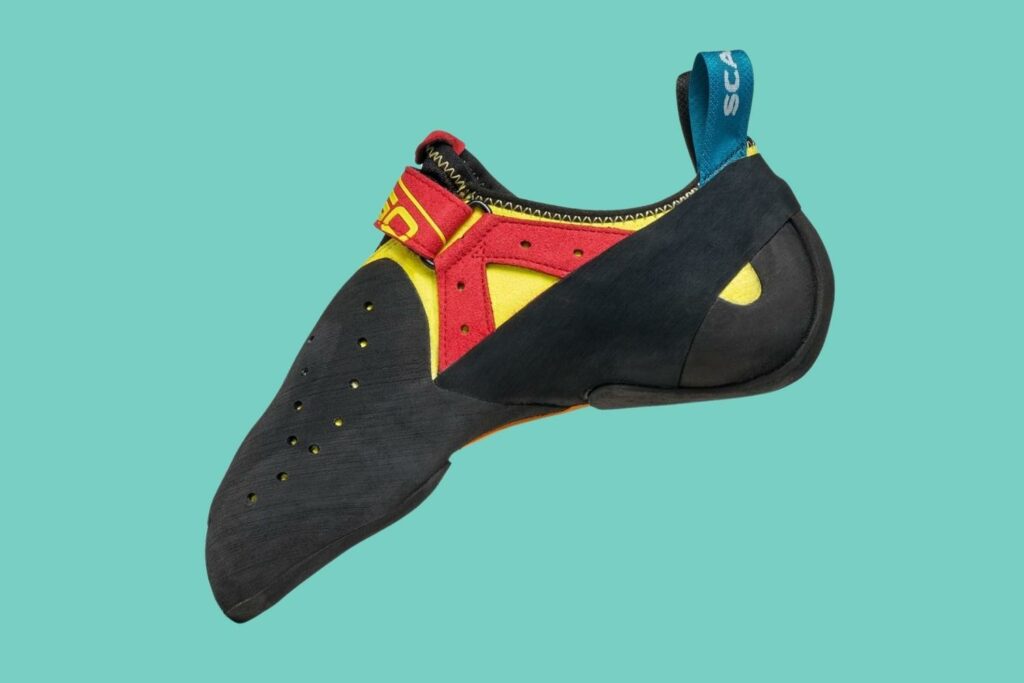
Many climbers laud the Scarpa Drago as a relatively comfortable high-performance shoe. However, as with any pro-level shoe, you’ll need to wear it tight to get the most out of it.
Most reviewers sized the Drago a half size to one size below street shoe size. Those who went down a full length, not unexpectedly, reported a longer break-in period and greater discomfort. However, after a couple of sessions, even climbers who chose a performance fit were highly satisfied with how the shoe molded to their foot. There was no more pain to distract from the task of climbing.
Many users say the Scarpa Dragos fit snugly and painlessly right from the beginning, which is why it received such a high score for comfort. Fit is average, with no complaints from those who identify as having wide feet. Some reviewers with narrower feet felt too much room in the sides and heel, and one wished for an extra velcro strap.
The Drago partly achieves these high marks due to its minimalist construction. The outsole is 3.5 mm, and the midsole 1.0 mm. This is on the lower side of the climbing shoe spectrum. The top toe rubber is M50, even softer and more malleable than the Vibram XS Grip 2 on the bottom. There’s no unnecessary part or extraneous rubber to hinder it in molding to your foot, so it feels much like a slipper, even though it has a velcro strap.
Performance

Edging
Climbing shoe manufacturers generally take one of two design paths to create a high-performance edging shoe.
One strategy, as illustrated by shoes such as the La Sportiva Miura VS, is to create a stiffer shoe that acts as a platform under your foot. Imagine standing on a rigid plank that’s attached to the rock. The stiffness of the shoe takes the strain off your feet and calves and allows you to stand longer, on smaller edges, with less effort.
The other approach toward making a stellar edging shoe with great precision is to build a soft and sensitive shoe that allows climbers to feel even the tiniest features on the rock. This design philosophy is clearly what drove the development of the Scarpa Drago.
Softer shoes can excel at edging partly thanks to their ability to conform to the shape of a foothold. This creates more surface area for contact, friction, and grip. Shoes of this nature may also give more warning before a fall because your foot begins to slip off a hold gradually rather than simply “popping off” as a stiffer pair might.
In practice, this is precisely how the Dragos work. You can feel the tiniest of edges, pebbles, and seams under your toes. On larger footholds and steeper walls, the Drago’s flexibility and ultra feel let you use your toes to pull yourself in like extra fingers.
The price to pay for this kind of edging power is that a soft shoe relies on the wearer’s foot strength to maintain rigidity. This isn’t for everyone. For advanced climbers whose foot muscles are trained and conditioned for this duty, climbing long, steep face routes in these shoes isn’t an issue. However, beginners may want a shoe with more built-in support when they first start tackling vertical routes with smaller footholds.
Smearing
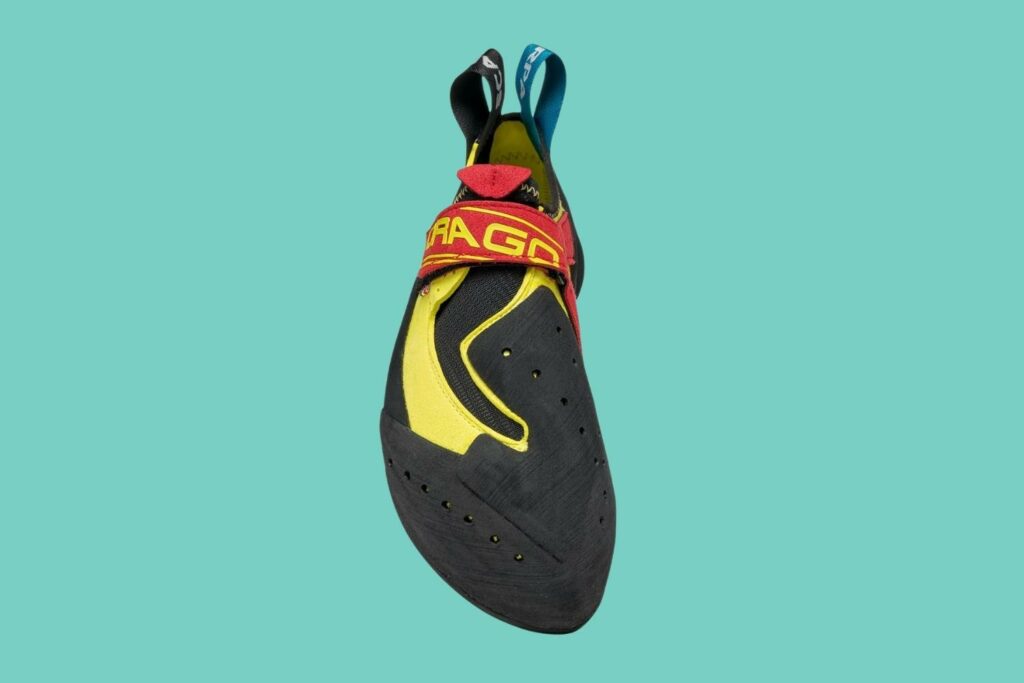
Aggressively shaped shoes sometimes feel clumsy when trying to smear on slabby to vertical terrain. Their stiffness and downward turn hinder their ability to make contact on a flat surface. The less rubber is touching the rock, the less friction, and grip.
The Scarpa Drago, though, defies this concept by being so compliant in flexing whichever way you need it to. It is perfectly suited for technical smearing, inspiring confidence on the smallest edges and ripples. The soft sole also completely conforms and molds itself to tiny pebbles and other micro features to maximize rubber contact.
Hooking
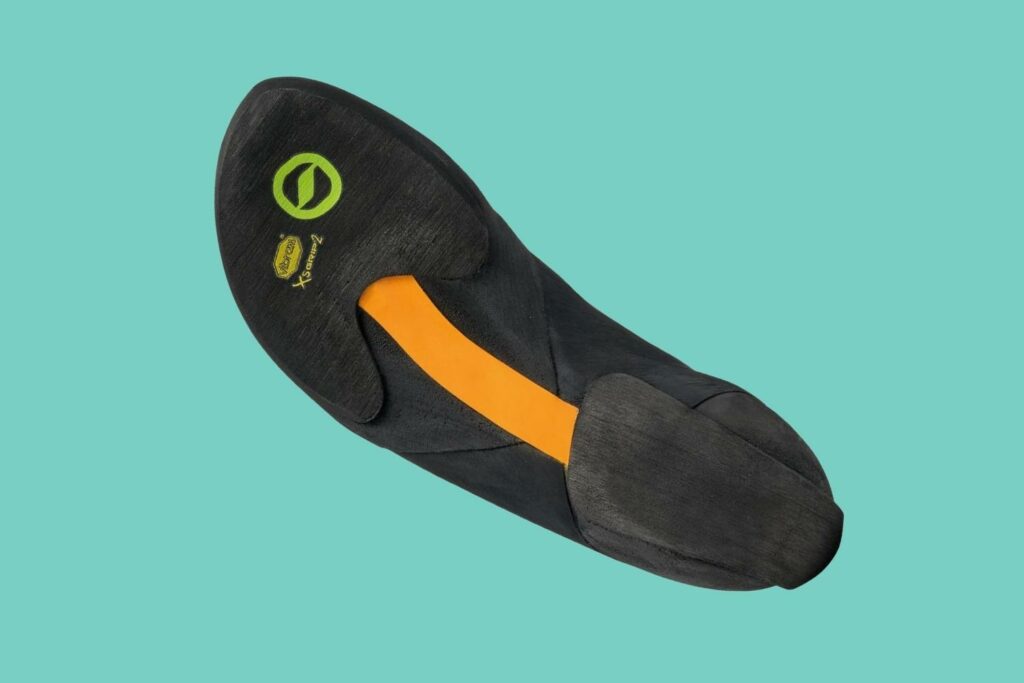
The Scarpa Drago is a master of many types of technical footwork mischief, from smears and scums to smedges and smidges, and words we haven’t even invented. You can include toe hooking with the side and top of this shoe to that list of skills. The main reason for this is the soft, sticky rubber that wraps the top front portion of the shoes.
The Drago’s flexibility allows you to curl your toes up for toe hooks without fighting the curve of the last. And the asymmetrical curve and total rubber coverage make pulling on the big toe’s inner side super solid.
The Drago is also highly capable of heel hooking. The heel cup and rand rubber extend all the way around and above the ankles to provide plenty of rubber contact. The only complaint was noted by those who didn’t size down enough or have narrower heels. They reported some looseness and associated slippage when you heel hooking with a lot of force.
Jamming
With its minimalist materials, lack of padding, and tall toe box, jamming the Drago into a hand-size crack isn’t its ideal application. The rubber on top of the toe helps protect and provide friction. However, the top of your foot and toe knuckles will be in pain if you jam the shoe sideways into a crack.
Uses
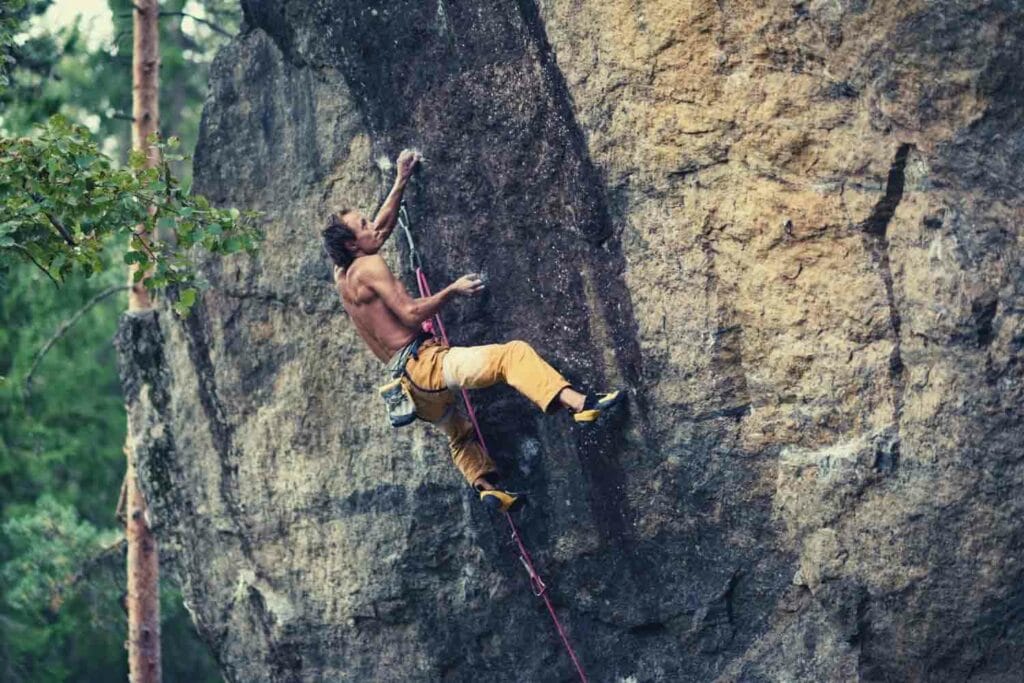
Sport Climbing
Scarpa developed the Drago as an ultimate tool for steep sport routes. If that style of climbing is your specialty, you won’t be disappointed.
The Drago excels at face climbing on limestone, granite, conglomerate, and sandstone. The combination of edging and smearing abilities gives confidence through varied terrain. On walls that angle past the vertical, it’s easier to keep your lower body pulled into the wall and keep more weight off your arms.
We noticed one minor weak point that may not be an issue depending on where you climb: the fairly blunt toe limits its ability to fit into smaller pockets.
Gym Climbing
The Drago conquers the slippery plastic jibs, horizontal roofs, and tricky volumes unique to indoor climbing without prejudice. An excellent all-around performer indoors, the demands of steep but short routes are a perfect match for the Drago’s unique talents.

I wouldn’t use the Dragos to run laps on 5.9s; that would be a waste of its rubber and talents. When the holds get smaller and the wall gets steeper, though, the Drago comes into its element. If your jam is styling the hardest lead routes and the most desperate problems at your local facility, this might be the only shoe you need.
Bouldering
The Drago is ideally engineered to crush burly boulders, with no overhang too steep and no micro flake too small to gain a purchase. The prevalence of heel hooks, toe hooks, and similar fancy maneuvers on the bouldering wall is well suited to the Drago’s strengths, as we already noted.
Your feet will feel like another pair of hands that can push and pull in almost any direction, and the rubber that nearly encloses the entire shoe sticks like a magnet to anything it touches. Drago’s lack of support isn’t a negative thing in a bouldering environment, and the extreme sensitivity is a huge plus.
Trad and Crack Climbing
Sure, you can, but maybe you don’t want to. Like most downturned shoes, jamming the Drago’s somewhat tall toe box into a granite crack can be awkward and painful. In this scenario, wearing an exceptionally sensitive shoe becomes a drawback rather than a benefit. There’s a reason stiff shoes like the TC Pro and Black Diamond Aspect excel at crack climbing.
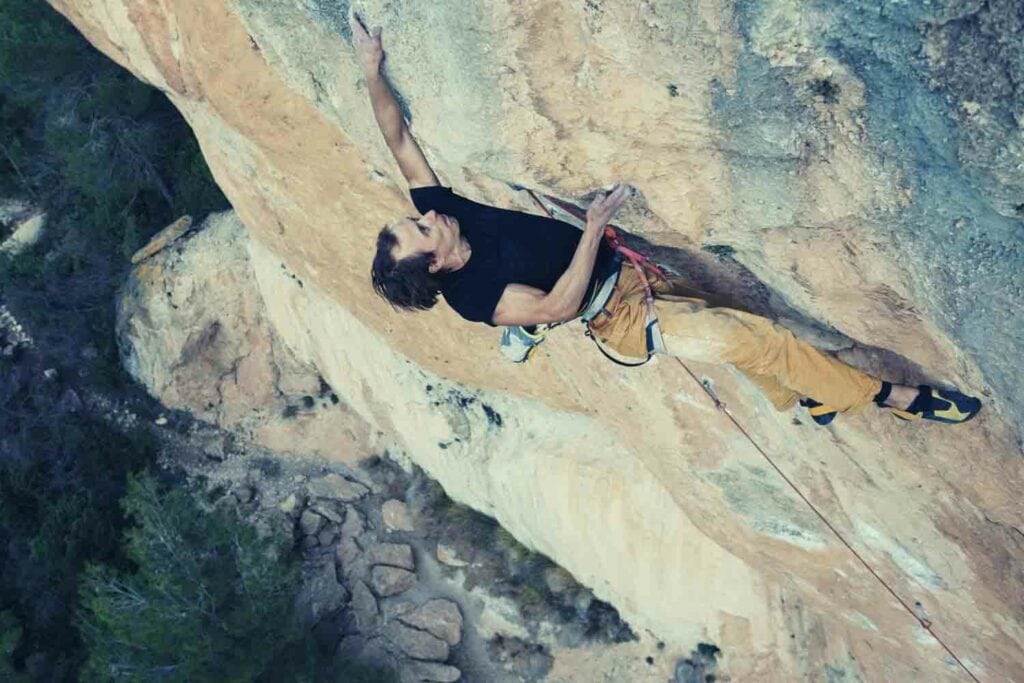
There are trad climbing routes where soft shoes are an advantage. For steep climbing on thin, technical cracks that don’t invite toe and foot jams, the Drago’s soft nature once again becomes a strength rather than a detriment. Trad routes that call for more smearing and stemming than foot jamming are also easy-work for the Drago.
Conclusion
For long-time users of the Scarpa Drago, this is often their go-to shoe for the hardest boulder sends and redpoint attempts. If your shoe requirements call for the highest performance on overhanging boulder problems and steep limestone sport routes, the Drago’s ability will meet your expectations.
A surprisingly comfortable climbing shoe with extra sensitivity, its superstar capabilities, and good durability justify the Drago’s high price tag.
Are you a hardcore boulderer or competition climber? Does your latest project demand incredibly sensitive footwork and the confidence that you are wearing the strongest performer available? The Scarpa Drago is a great choice for you to consider.
Facts
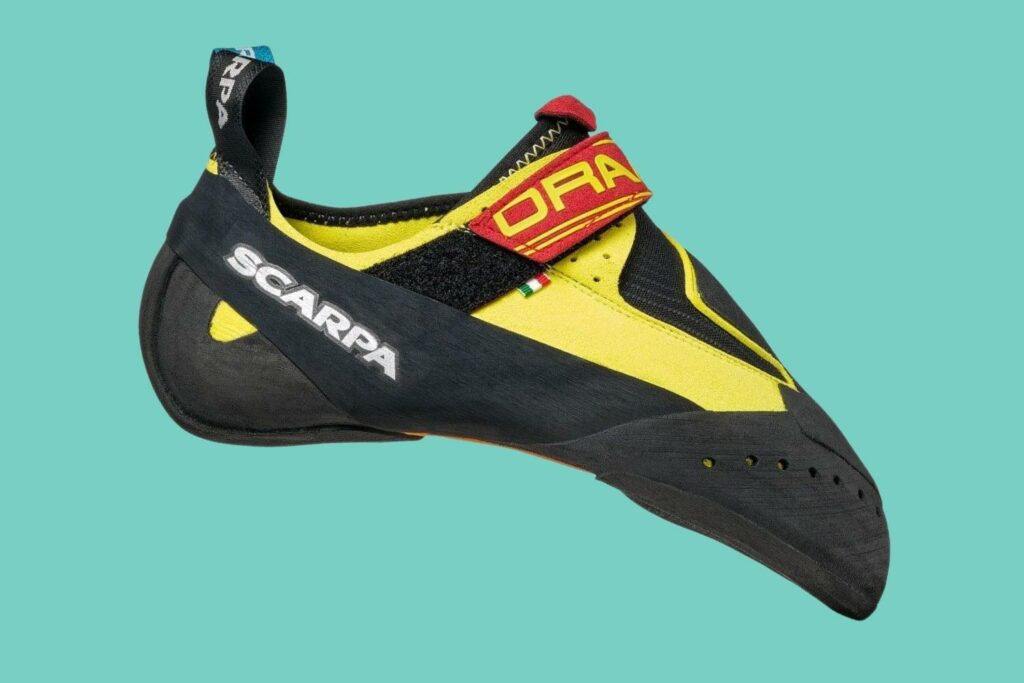
Technical Specs
| Weight | 7.1 oz/200 g |
| Fit | Performance |
| Shape | Asymmetric |
| Downturn | Aggressive |
| Sole thickness | 3.5 mm |
| Stiffness | Soft (1/3) |
| Closure | Velcro |
| Lining | Unlined |
Do you need help?
Whether you’re looking for your first climbing shoes or interested in leveling up, picking the perfect pair is as much art as science!
Discover our 2024 selection of the best climbing shoes with a detailed buying guide.
Use
| Activities | Bouldering, Sport |
| Level | Intermediate/Advanced |
Technologies
| Outsole | Vibram XS Grip2 rubber |
| Midsole | 1.0 mm Flexan |
| Upper | Microsuede and leather |
Where to Buy It?
We buy most of our stuff from REI.com. Not only their service is great, but it’s also co-op, so they treat their employees well and answer to their members, not shareholders.
Note: we receive a commission when you buy through us. This keeps our team of writers/climbers going!
